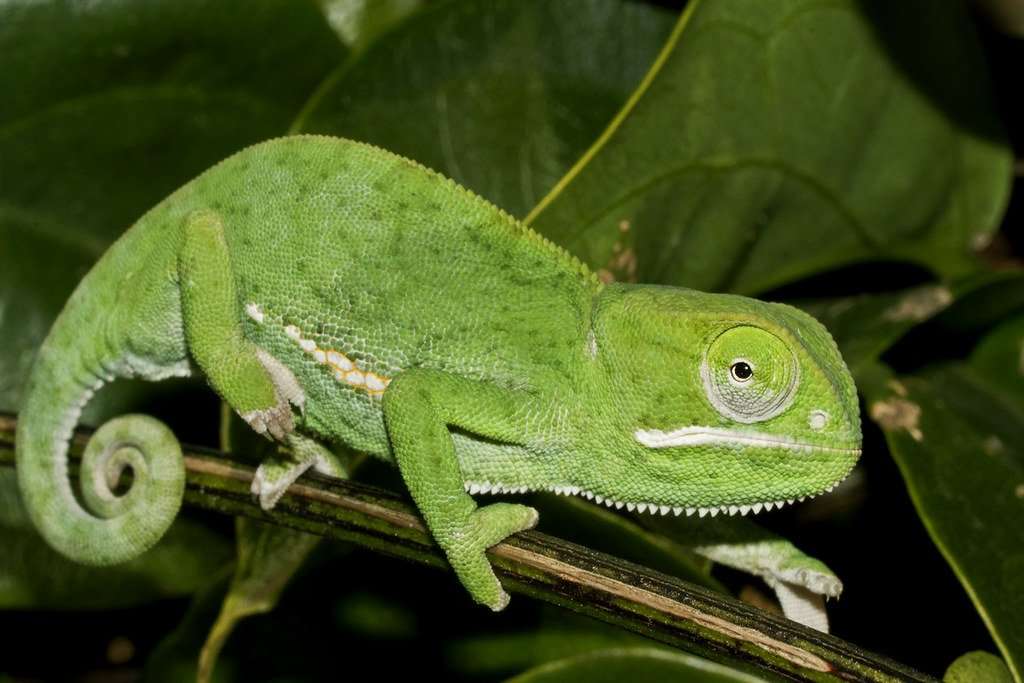
Description:
Scientific name: Chamaeleo dilepis
Life span: 5-8 years
A species of arboreal chameleon in the Chamaeleonidae family is the flap-necked chameleon (Chamaeleo dilepis). A giant chameleon, Chamaeleo dilepis, can grow to be 35 cm long overall (including the tail) (14 in). The colors range from light to dark green, yellow, and brown. Typically, the lower flanks have a pale stripe while the higher flanks have one to three pale patches.
Native Region/Habitat
Across much of sub-Saharan Africa, from as far north as Ethiopia and Somalia to a western end of Cameroon, and as far south as northern South Africa, Chamaeleo dilepis is found. It dwells in coastal forests, wet or dry savannahs, woodlands, and bushy grasslands, and it occasionally travels into rural and suburban regions.

Behavior:
Even though these adults are generally cool and laid back, they occasionally succumb to stress readily. We do not advise housing multiple males together because they will be territorial with one another.
Care As a pet/In captivity:
Enclosure:
Flap-necked Chameleons require a terrarium with adequate room, good ventilation, and the ability to hold humidity.
Because they are arboreal and will want to climb up high, you should give a single Flap-neck at least 20 to 30 inches in length, width, or depth, and anywhere between 30 and 40 inches in height. Because of their territorial nature and potential for aggression, males shouldn’t be confined together.
Temperature:
Your Chameleon needs to be kept at temperatures between 65 and 72 degrees Fahrenheit at night and between 75 and 90 degrees Fahrenheit during the day. Give them a UVB basking point that is always 95 degrees Fahrenheit, please.
You want to provide them with a gradient of warmth from their basking point at the top of the cage so they can effectively regulate their body temperature. You can accomplish this by maintaining a temperature of 95 degrees Fahrenheit in their UVB light and 75 degrees in the cage’s bottom.
Humidity:
The humidity in the enclosure of your flap-necked chameleon should always be between 50% and 65%. Misting can be used every day to accomplish this. You should shower them a few times a day, being careful to remove all the vegetation. Put a hygrometer to keep an eye on their vital signs and ensure they are receiving the right amount of fluids.
Feeding:
You can give your mealworms, Flap-neck crickets, dubia roaches, and hornworms food in a cage. Provide 3 to 9 prey items to adults each day, then adjust based on the size and diet of your pet. Children may need to eat once or twice each day.
Table





